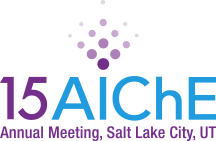

Quantitative Systems Pharmacology (QSP) is an integrated systems-level modeling approach that combines the fields of pharmacology and systems biology. It quantitatively links the pathogenesis of the disease to the mechanism of action of drugs and clinical outcomes by utilizing data from a number of different sources like in-vitro target engagement assays, in-vivo studies as well as patient data from clinical trials. It thus allows mechanistic modeling of the effect of different drugs on disease progression and late stage clinical outcomes and has emerged as an important tool to advance the discovery and development of therapeutic drugs.
In this talk, the application of QSP for modeling the pathogenesis of a skin disease, acne, will be presented. Acne is a multifactorial disease with limited understanding of its pathogenesis. Therefore, a QSP based approach was used to understand the interplay between the processes involved in acne such as sebum production, P. acnes growth and inflammation etc. and their role in disease progression. Also, the effect of modulating these acne processes on disease severity has been evaluated to guide the development of new acne treatments. In addition, different virtual patients have been simulated which can help in identifying the patient subsets that can benefit most from new acne treatments under development within GSK. We have also evaluated the efficacy of three GSK compounds in reducing acne severity as well as compared them to currently available treatments using this model. The talk thus presents an example of how a QSP model of a disease, developed by utilizing current literature knowledge and in-silico tools, can help guide decisions in different stages of drug development.
